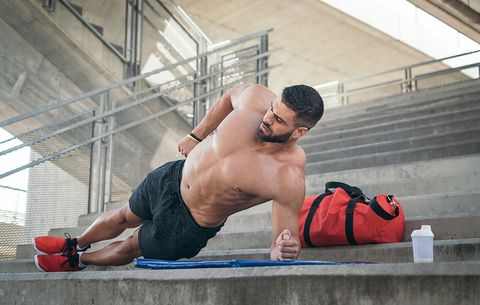Barry asks: I was recently diagnosed with a groin pull. My doctor said it had something to do with my adductor muscles. I’ve been running for about three months, and I’m wondering how could I have done that while running? Is there anything I can do to prevent this from reoccurring?
The adductors are one of those muscles that you’ve probably heard about, but never really thought about until you wind up in the doctor’s office. The adductors are located on the inner thigh and run from the pelvis all the way down to the knee. Primarily they are used during lateral movements—like moving from side-to-side when playing tennis. The adductors are responsible for bringing your leg in toward the center of your body, and they actually help keep you stable as you run.
Because running is pretty much all forward motion, overworking your adductors is often not a huge problem. In some situations, however, the adductors may assist the hamstring muscles, especially when the hamstrings get fatigued during your longer runs or when you suddenly accelerate. Another factor that can contribute to recruiting the adductors is running on cambered (or slanted) surfaces. Running on a cambered road is similar to running with a leg length discrepancy, meaning one side is higher than the other. When running on this slanted surface, the foot on the higher side of the road tends to pronate (roll inward) more than usual, and excessive pronation is often associated with an increased injury rate.
Running is great , but relying solely on your training runs can create muscle imbalances because of the repetitive movements that recruit only those specific muscle groups. The forward motion of running primarily recruits our quadriceps and hamstring muscles, so runners tend to have weak adductor muscles simply because they are not used as much, which makes you prone to pulls when you do recruit them.
According to Dr. Jordan Metzl’s book Running Strong, you can help a groin pull by icing the area for 15 minutes four to six times a day, taking anti-inflammatories like ibuprofen, and cross-training if the pain makes it too difficult to actually run.
That is why I always think it’s wise for runners to keep the adductor muscles strong to prevent muscle imbalances that predispose you to injury. When you have healed adequately and get the green light from your doctor, you can begin doing exercises that specifically strengthen the adductors. Here are some simple exercises you can do at home. (A typical routine is doing 2 sets of 12 to 15 repetitions for each move.)
Side-Lying Leg Raises
Lie on your side with your top leg bent and your foot placed on the floor in front of your bottom leg. Raise and lower the bottom leg to work the adductor muscles. The range of motion is small. When this feels easy, you can add some resistance with ankle weights or bands around your ankles. Repeat on both sides.
Side Planks
Lie on your side with legs, hips, and shoulders in line. Prop yourself up using your forearm. Lift your hips off the floor and hold for 10 to 15 seconds, then slowly lower yourself back to the ground. Increase to holding this pose for one minute. Repeat on both sides.
Thigh Squeeze
Lie on your back, knees bent and feet flat on the floor. Place a ball, roughly kickball size or smaller, between your knees. Press your knees inward, which contracts the adductor muscles, and hold for five seconds. Relax and then repeat.
Standing Leg Swing
Swing one leg out to the side, then swing it back across your body in front of your other leg. (Feel wobbly? Hold onto a steady object.) Attach ankle weights or a resistance band to make the move harder.
